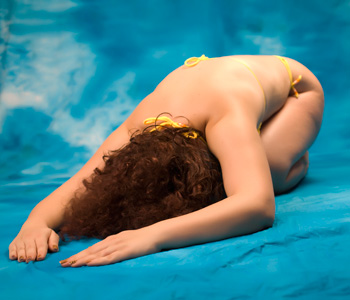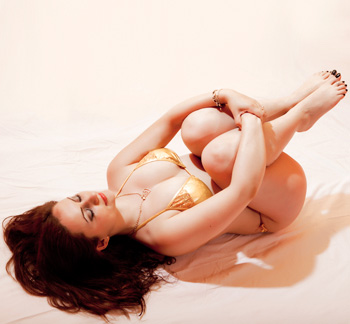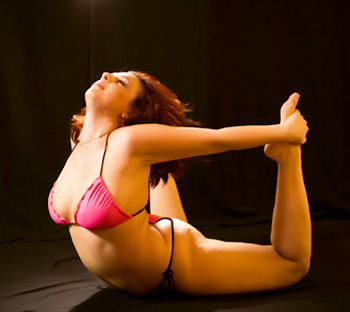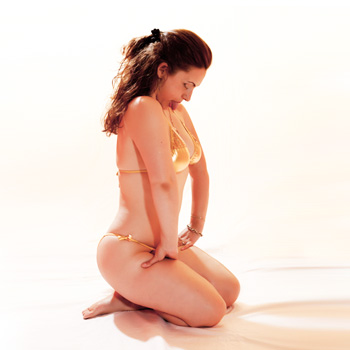AYURVEDA and HATHA YOGA
“Ayurveda indicates what is appropriate and what is inappropriate, fortunate or unfortunate in the living conditions of the being, what is favourable or unfavourable for longevity, as a measure of life itself.” (Charaka Samhita)
Ayurveda and Yoga – Two Twin Systems
Art and at the same time science of restoring and maintaining the physical, mental and psycho-spiritual health, Ayurveda is deeply intertwined with yoga, both being revealed by the Divine to the Rishis (the sages from the East). The subject of both sciences is the same: the immortal spirit (ATMAN) and their common denominator is the system of the five basic elements. Ether, water, fire, earth and air are emitted from the Supreme Cosmic Consciousness and underlying the whole creation. They structure also the surrounding nature and the human nature.

TRIDOSHA theory – the basis of Ayurveda
TRIDOSHA theory sustains that the subtle human physiology is influenced by three key factors (Doshas), which were created by combining the five elements.
The three DOSHAS are: Vata Dosha, Pitta Dosha and Kapha Dosha. They manifest, in varying degrees, in every human being. No human body can survive without all three Doshas. The proportion of Doshas, when being in a state of harmony, determines the individual constitutional type, PRAKRITI. By disrupting even only one of the three essential factors of this triad the body condition called VIKRITI is resulting.
When selecting the best yoga techniques, one of the most important factors that will lead us in choosing them is VIKRITI or the imbalance nature in our being, manifested as a certain physical condition or a negative state. If we are in a state of harmony, if we hit a perfect natural balance and we burst out of vitality, joy, power of work and happiness, then we can create a spiritual programme according to our constitution (PRAKRITI), the season type and the time of the day.
What type of yoga techniques are the best for you?
If you have a VATA constitution or a VATA type of imbalance, the most suitable techniques are the relaxing and calming ones, the vitalizing ones and those which have a heating effect.
If you belong to a PITTA constitution or you have a PITTA imbalance the most useful yoga exercises are the ones which have a calming, pacifying effect and which help the sublimation and the refinement of the fire energy in the being. If PITTA is too much aggravated, exercises of cooling down the structure can be added. If the predominant constitutional type is KAPHA or you have a KAPHA imbalance the most suitable exercises are the dynamic stimulating and heating techniques.
ASANAS which balance the VATA DOSHA
Generally, most of ASANAS are good for the VATA imbalance, because they have a mind calming effect and they remove the specific agitation. Since VATA DOSHA accumulates mainly in the lower area of the abdomen, in the pelvis and colon, the techniques which comprise these areas have an increased efficiency in balancing the DOSHA. Still there are some body postures with a particular beneficial effect in such cases.

One exceptional technique is Yoga Mudra (photo). Sit on your knees; keep your heels apart with 5-6 cm between your toes. Lower your buttocks so it can sit in the “bed” made up by the feet. Then lean forward until your forehead touches the floor, aiming for the buttocks to stay as much as possible stuck to the heels. Place the hands in front, palms facing down, like in a worship gesture. The abdominal compression created by this ASANA is excellent for constipation and flatulence, troubles caused by the imbalance of VATA DOSHA.
Another very useful asana to rebalance the VATA DOSHA is VATAYANASANA (photo) or PAVANAMUKTASANA (the gas removal posture). This is done starting from lying on the floor on your back. Pull your feet towards the abdomen so that your knees together can reach, as much as possible, under the chin, and your heels to be as close as possible to the thighs. Then hold your calves with your hands and bring your folded legs as close as possible to the trunk. This ASANA, as its name says, is very good in case of flatulence.

Other postures recommended for the VATA DOSHA imbalance or for the human beings belonging to VATA constitutional type are: PASCHIMOTTANASANA (The tongs posture), HALASANA (The plough posture) Padmasana (The lotus posture) and SHAVASANA (The corpse posture). By doing this you will notice a decrease in mental agitation due to VATA excess, along with a state of calm and inner silence.
ASANAS that balance the PITTA DOSHA
The ASANAS which balance the PITTA DOSHA are the ones which compress the umbilical region and solar plexus, as the PITTA’s main location is the small intestine. Such ASANA is DHANURASANA (photo), useful for improving the liver and spleen function, and for eliminating the PITTA specific states of irritation and anger. To perform this, lie on the floor facing down. Lift the chin; simultaneously grab your ankles with your hands, while arching the back. The legs are the only active element of DHANURASANA, the arms remain passive (as the string of a bow, perfectly straight, bringing together the shoulders and the ankles). Push the legs in front and up, through a sharp contraction of the thighs, which arches the back and raises the shoulder. The dynamic phase follows, consisting of a swing, just like that of a boat on the waves, slowly in the beginning, then increasingly gradually, so that the support point of the movement comes between the chest and the thighs. A very deep abdominal massage is done in this way.
 PASCHIMOTTANASANA (the tongs posture) and KARNAPIDASANA (the ear pressure posture) are also useful for human beings with a predominance of PITTA DOSHA or with an imbalance of this DOSHA.
PASCHIMOTTANASANA (the tongs posture) and KARNAPIDASANA (the ear pressure posture) are also useful for human beings with a predominance of PITTA DOSHA or with an imbalance of this DOSHA.
ASANAS that balance KAPHA DOSHA The asanas which balance KAPHA DOSHA are generally those that relax the chest and abdominal area because the aggravated Kapha accumulates mainly in the lungs and stomach, in the form of mucus. These are excellent ASANAS to prevent and treat respiratory catarrhal diseases (for example bronchitis) or the constriction ones (e.g. asthma, emphysema). An extremely useful asana for KAPHA DOSHA is SIMHASANA (lion posture) (photo). Get down on your knees and cross your legs, putting the ankle of the right leg above the Achilles tendon of the left leg. Place your palms on your hips, with the fingers pointing to the trunk and elbows out. The fingers will be kept together. Take then a synchronized contraction of all the muscles of the neck, face and jaws, while the chin is pressed down as much as possible. The eyes are closed and oriented in a slightly convergent direction towards the middle of the forehead. The trunk will be maintained as straight as possible.
 The stimulating, dynamic yoga techniques like UDDHIYANA BANDHA, NAULI KRIYA, SURYA NAMASKARA (the sun salutation) or the reverse positions such as SHIRSHASANA (the headstand posture) have a diminishing effect on the excess of the KAPHA DOSHA, which can be manifested like apathy, lack of dynamism, obesity, etc.
The stimulating, dynamic yoga techniques like UDDHIYANA BANDHA, NAULI KRIYA, SURYA NAMASKARA (the sun salutation) or the reverse positions such as SHIRSHASANA (the headstand posture) have a diminishing effect on the excess of the KAPHA DOSHA, which can be manifested like apathy, lack of dynamism, obesity, etc.
The selection of yoga techniques, for the individual SADHANA, according to the season The HATHA-YOGA spiritual practice can be adapted according to the season, in order to prevent the occurring of some DOSHAS` imbalances which are favoured by the seasonal changes. For example, during cold and wet times (spring) it is good to do the ASANAS which create the balance of KAPHA DOSHA. In the summer and early autumn the postures which reduce the PITTA DOSHA excess are recommended and during the time of the year characterised by cold and dry weather (late autumn and winter) the techniques that balance VATTA DOSHA are useful..
In order to determine your constitutional type and thus to be guided in choosing different ASANAS, you can ask someone who has studied Ayurveda or use the guidelines below.
Ayurveda questionnaire to determine the individual constitutional type (PRAKRITI)
|
VATA constitution |
PITTA constitution |
KAPHA constitution |
1. Thin structure, skin-and-bone, too tall (or too short), low weight. |
1. Average weight and structure. |
1. Robust structure, heavy weight, even overweight. |
2. Se îngraşă foarte greu. Uneori greutatea It is very difficult to gain weight. Sometimes they undergo weight fluctuations from one period to another. |
2. Weight is average and constant and weight fluctuations are small. |
2. It is difficult to lose weight. They gain weight easily.
|
3. Dry skin. |
3. Warm and oily skin. |
3. Cold and oily skin. |
4. Difficulty in standing the cold. Sweating little. |
4. Difficulty in standing the heat. Sweating a lot. |
4. They like the heat rather than the cold. Moderate sweating. |
5. Skin may have dark shades and dryness. |
5. Olive or pink skin. Easily turns red in the sun or intense emotions. |
5. Skin is pale or “”white as milk”. |
6. The nose is snub, crooked or thin. |
6. The nose is pointed. |
6. The nose is large. |
7. They suffer more often than other structures from constipation or flatulence. |
7. They suffer more often than other structures of stomach burn or diarrhoea. |
7. They suffer more often than others of heaviness in the stomach, which persists long after the meal. |
8. They like fatty and hot foods. |
8. They like cold food. |
8. They like dry and warm food. |
9. In critical situations, they react with fear, anxiety, and extreme agitation. |
9. In critical situations, they react with anger or irritability or verbal violence. |
9. In critical situations they feel depressed, lethargic or totally indifferent. |
10. They are characterized by states of excitement, joy, but in case of imbalance fear, anxiety, feelings of emptiness can occur. |
10. They are very focused, easily competing with anyone (even themselves), they like to lead – aspect which might take them to despotism (in case of imbalance). |
10. They sleep very deeply and they wake up with difficulty in the morning. |
11. They have a light sleep, they wake up easily, and sometimes they suffer from insomnia. |
11. They sleep well and they wake up when they aim to. |
11. Doarme foarte profund şi dimineaţa se trezeşte greu. |
12. Their dreams often contain flight or scenarios with lots of emotions. |
12. Their dreams contain fire (fires, sun, lightning), richly coloured images or conflict situations. |
12. Their dreams contain water (lakes, rivers, waterfalls) or domestic scenes. |
When you answer to questions in the „Ayurveda questionnaire”, mark with 2 points the statements which fit you very well, with 1 point if the ones which fit you to a certain extent and with 0 points if the statement is not true. The number of points will show you the degree of the three DOSHAS in your constitutional type. Each individual is a unique combination of the three vital forces.
Taken from YOGA MAGAZIN nr. 9
yogaesoteric
April 2011


